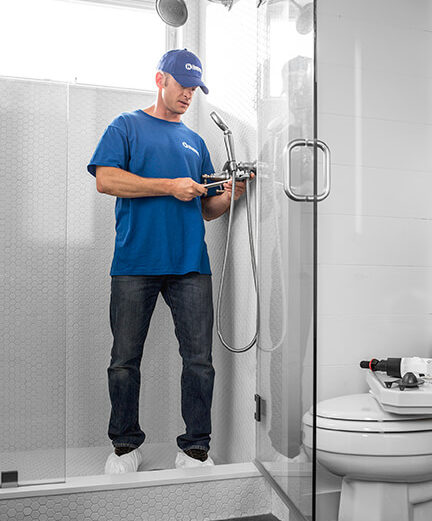We offer a wide range of services for that fresh look, or just maintenance or updates to keep your home functioning and safe. Regardless of the size of the job, we have a craftsman that can tackle it. We offer a wide range of services for that fresh look, or just maintenance or updates to keep your home functioning and safe. Regardless of the size of the job, we have a craftsman that can tackle it.

Drywall / February 28, 2023

Drywall is among the most affordable options for finishing interior spaces. While the material is the most affordable, that doesn’t mean it is cheap. Drywall services in Vancouver are expensive, depending on the project size.
When you care for the material, drywall will last for years. Unfortunately, many people don’t understand that drywall, even when painted, needs routine care and maintenance.
If you want to keep your drywall looking clean and beautiful, you need to take care of it. Letting the material collect dust or continuously adding finishes to the surface will create cosmetic and structural issues later. Your walls may become unintentionally textured. Thankfully, if you commit to cleaning your interior walls once per year, you can protect the longevity of the product and the beauty of your home. The cleaning and maintenance process is straightforward and only involves four essential steps.
Older drywall surfaces collect dust. Newer materials, primarily finishes like paint and wallpaper, have dust-resistant properties, meaning dusting is unnecessary. Still, older walls will need proper dusting to limit potential damage.
People don’t realize it, but dust is abrasive and can cause tiny imperfections in the drywall surface. Over time, these minor damages become significant problems, weakening the material’s structure.
You can dust your walls using a tack cloth, shop vac, or both. When using a shop vac, use the soft brush attachment. You want to avoid stiff bristles or hard plastic because they can scratch or gouge the surface of the walls.
After dusting the walls, you can wash them. You can only wash a drywall wall if it has a finish or some coating protecting it, like paint or wallpaper. Also, use only a minimal amount of water. A cellulose sponge can help you control the amount of water you use.
If necessary, you can also use mild soap. Be careful when cleaning painted walls; soaps and detergents can damage the finish. Also, too much water or elbow grease can damage the surface. Try a mix of baking soda and water for set-in stains or scuff marks. Mix the two until they make a paste. The slightly abrasive texture can help remove surface marks.
You probably hang pictures or decorations using nails, tacks, and other materials throughout the years. When you remove items, take the time to repair the wall surface. For example, if you remove a nail from a wall hanging, patch the hole with drywall compound. Making repairs as they occur will save you time in the long run.
After years of repainting and repairs, your drywall is bound to get a little bumpy and uneven. You can sand the material to restore some of the uniformity of the product. The primary drawback to sanding drywall is that it’s time-consuming. Because the task takes time and is tedious, it is best to hire a company or drywall professional.
Drywall is heavy and fragile. If you ever need to replace large sections because of water, mould, or fire damage, contact a professional.
Replacing large sections of drywall, especially contaminated or compromised drywall, is not a DIY project. A professional can safely handle the repair or replacement without risking you or your family.
While you can call a handyman for most drywall jobs, it is usually better to work with a drywall installer, someone with experience. If you are looking to have your walls sanded or need to replace or install large sections of drywall, contact Handyman Connection and schedule an appointment with one of the experienced drywall installers.